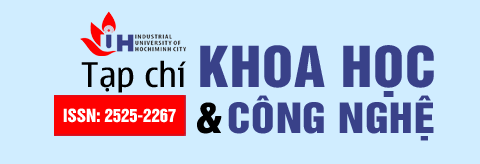EVALUATION OF QUALITY OF ORANGE GROWTH LAND IN TRA ON DISTRICT, VINH LONG PROVINCE
Main Article Content
Abstract
Long-term intensive cultivation without proper management measures can lead to soil degradation. Therefore, controlling soil quality in orange growing areas in Trà Ôn District, Vĩnh Long province is necessary to protect soil quality and maintain sustainable agricultural development. The purpose of the study is to evaluate soil quality (SQI) through determining soil physical and chemical indicators and using appropriate statistical methods. Soil samples in the orange cultivation area of Tra On district, Vinh Long province were collected and analyzed for soil physical and chemical parameters including pH, electrical conductivity (EC), density (D), porosity (P%), total organic content (TOC), available phosphorus, ammonium nitrogen, water holding capacity (WHC), total phosphorus, cation exchange capacity (CEC), % clay, % silk, % sand. The research datas were used Principal Component Analysis (PCA) to determine the Minimum Data Set (MDS), which showed that there are 3 principal components explained 88.4% of the variation of the indicators and identified 4 indicators (including NH4+, pH, density, and % silt) as representatives for assessing soil quality. The highest soil quality index was found in TO 1 > TO 3 > TO 2 > TO 6 > TO 4 > TO 5. Our findings provide evidence that soil quality evaluation method, SQI, can be a useful tool for assessing agricultural soil quality.

